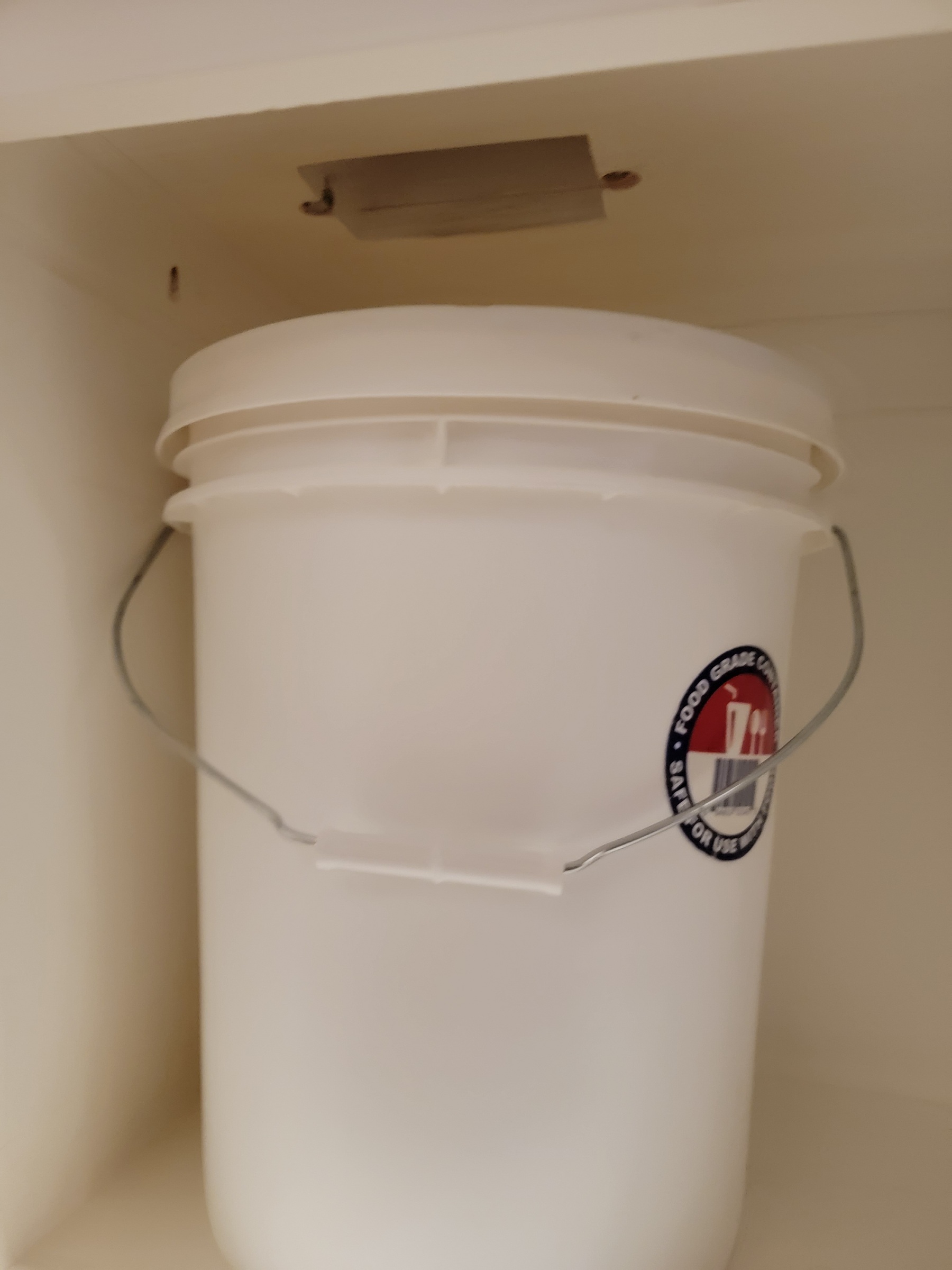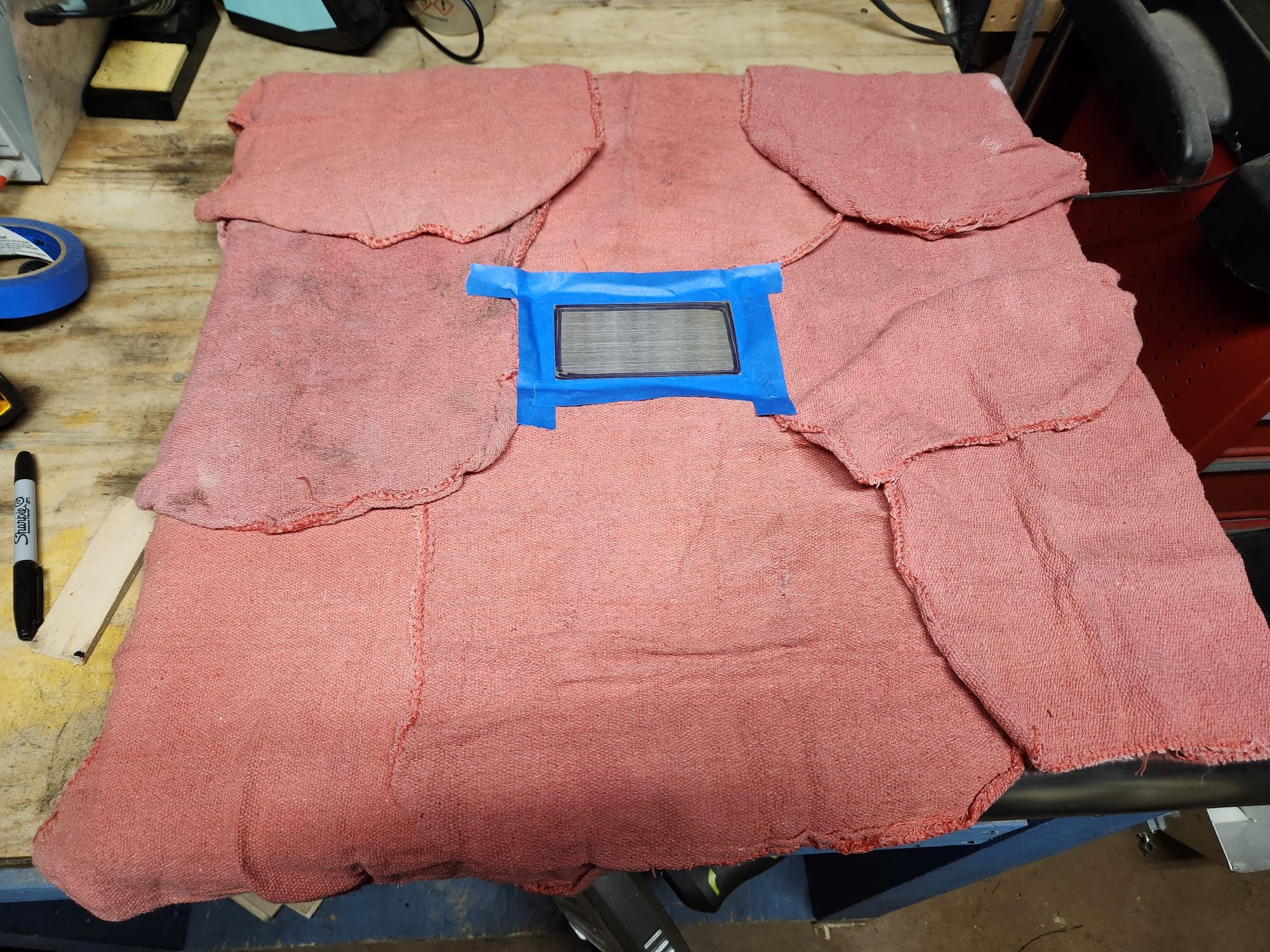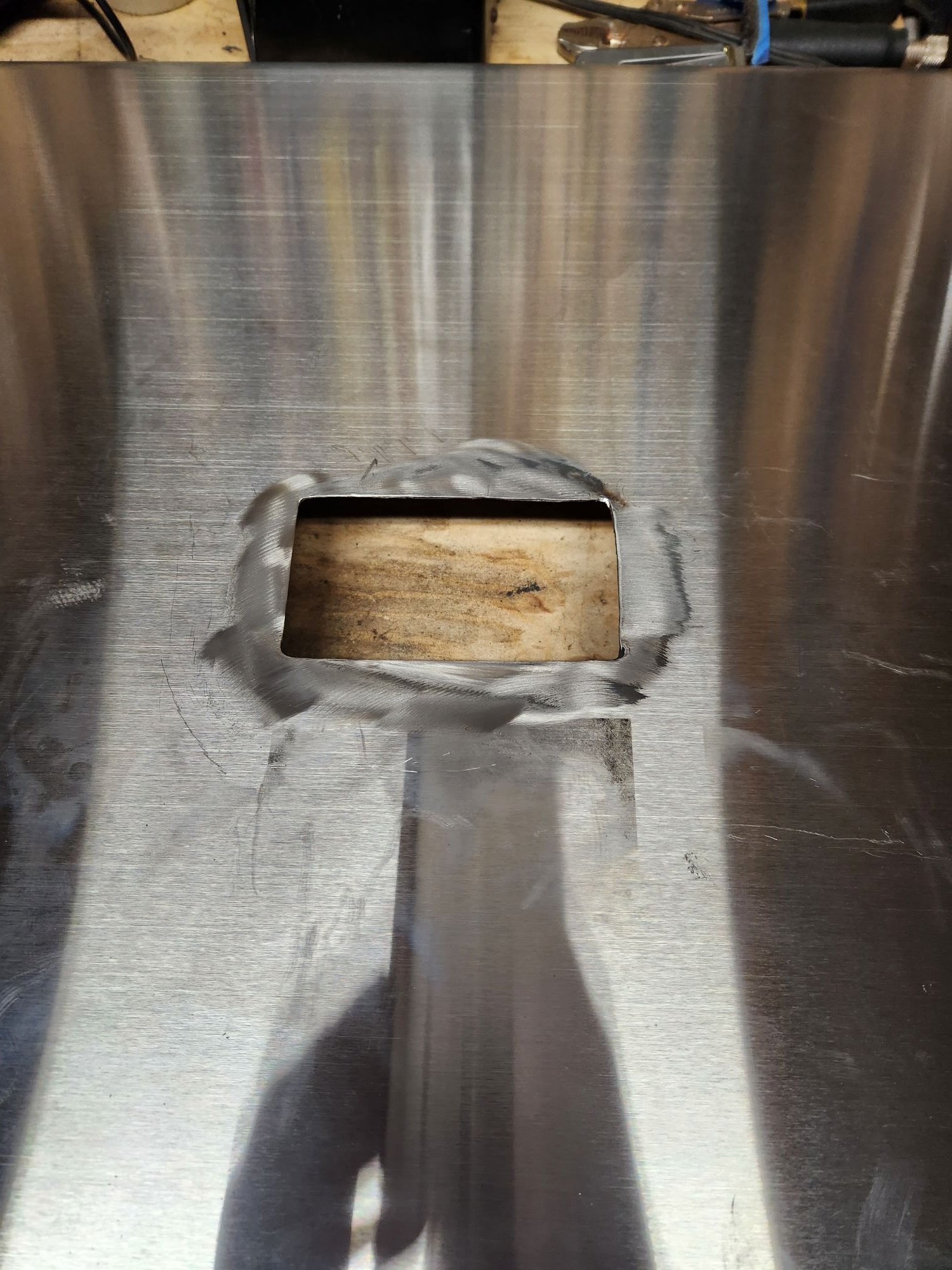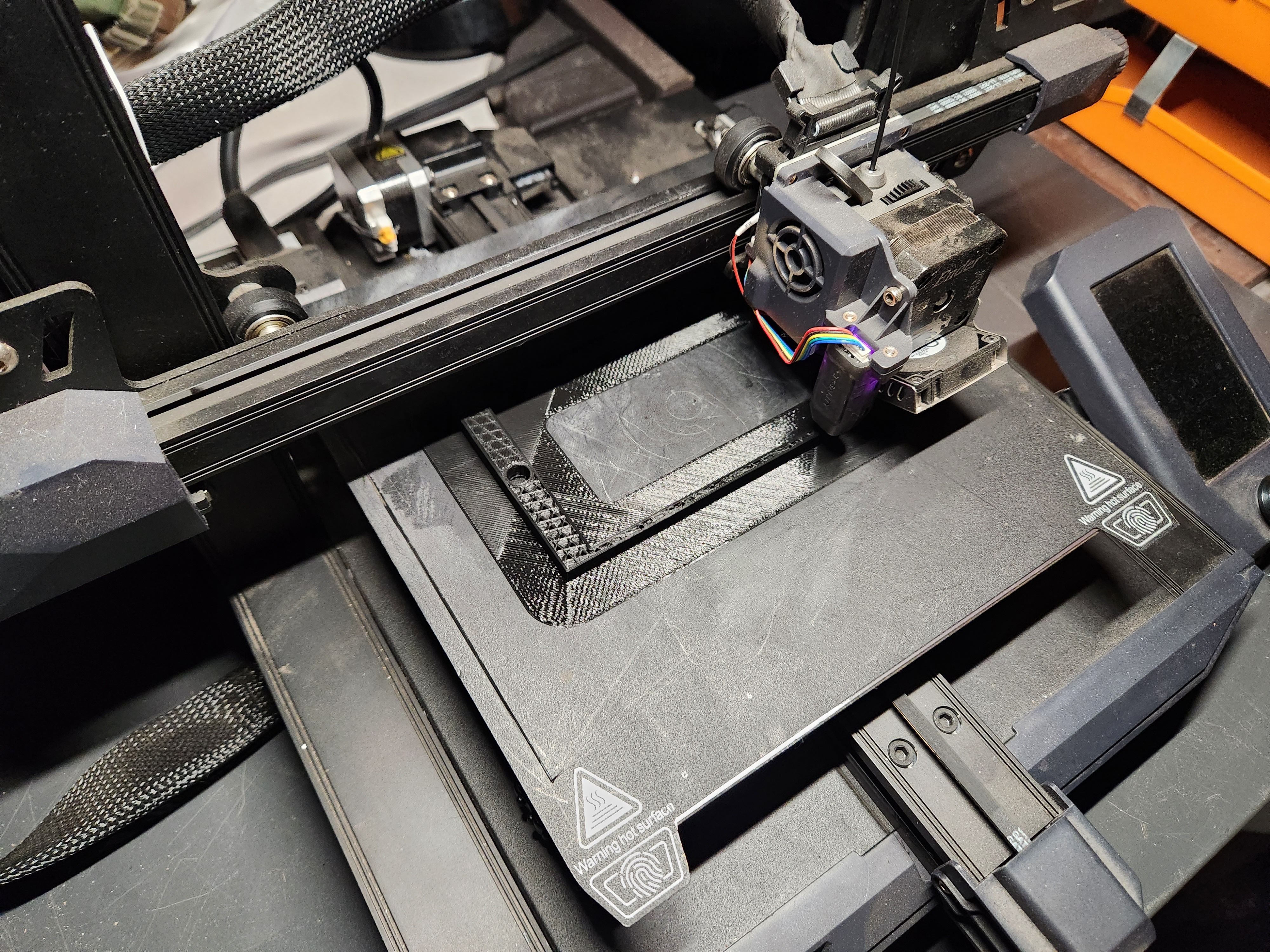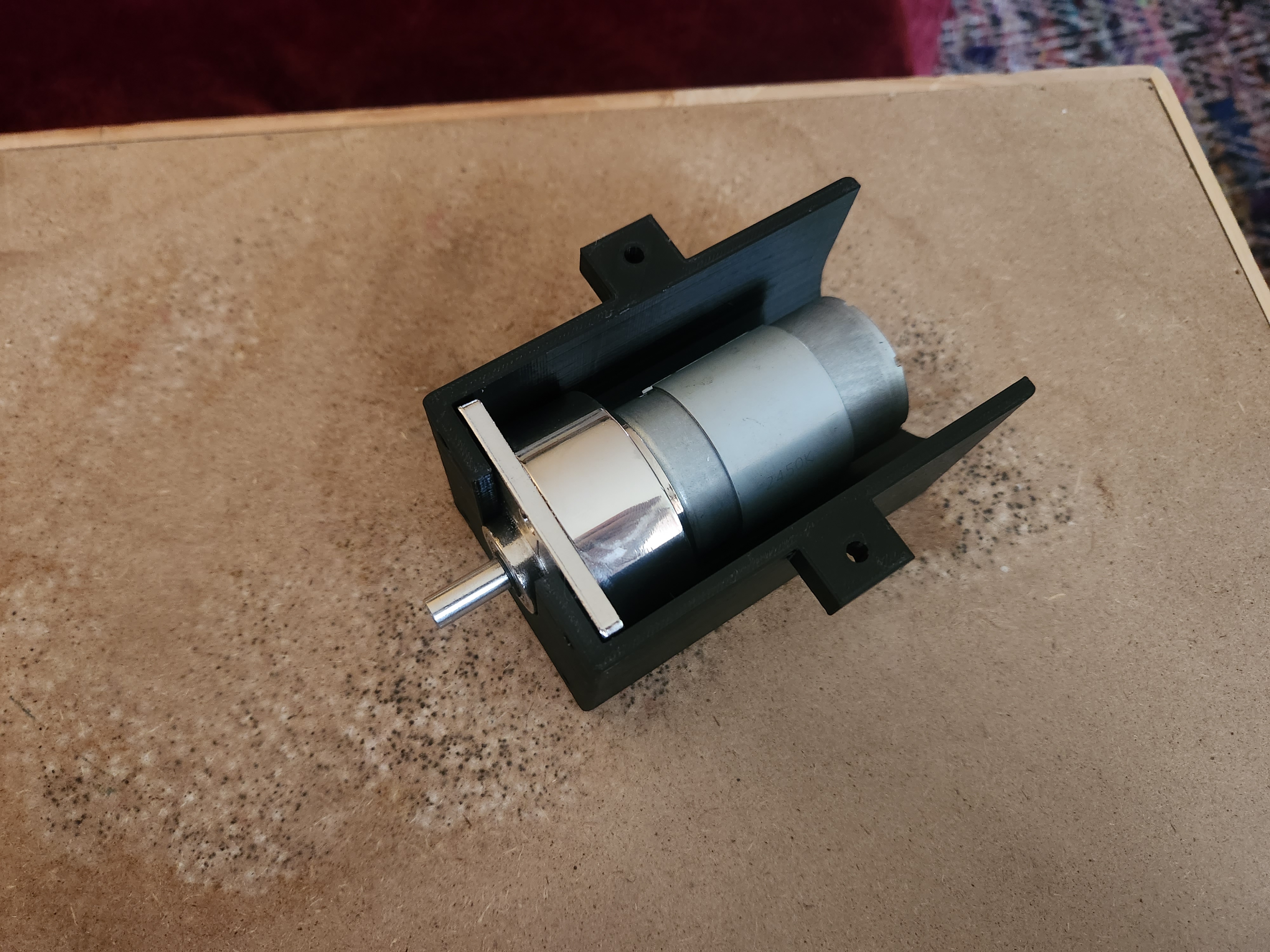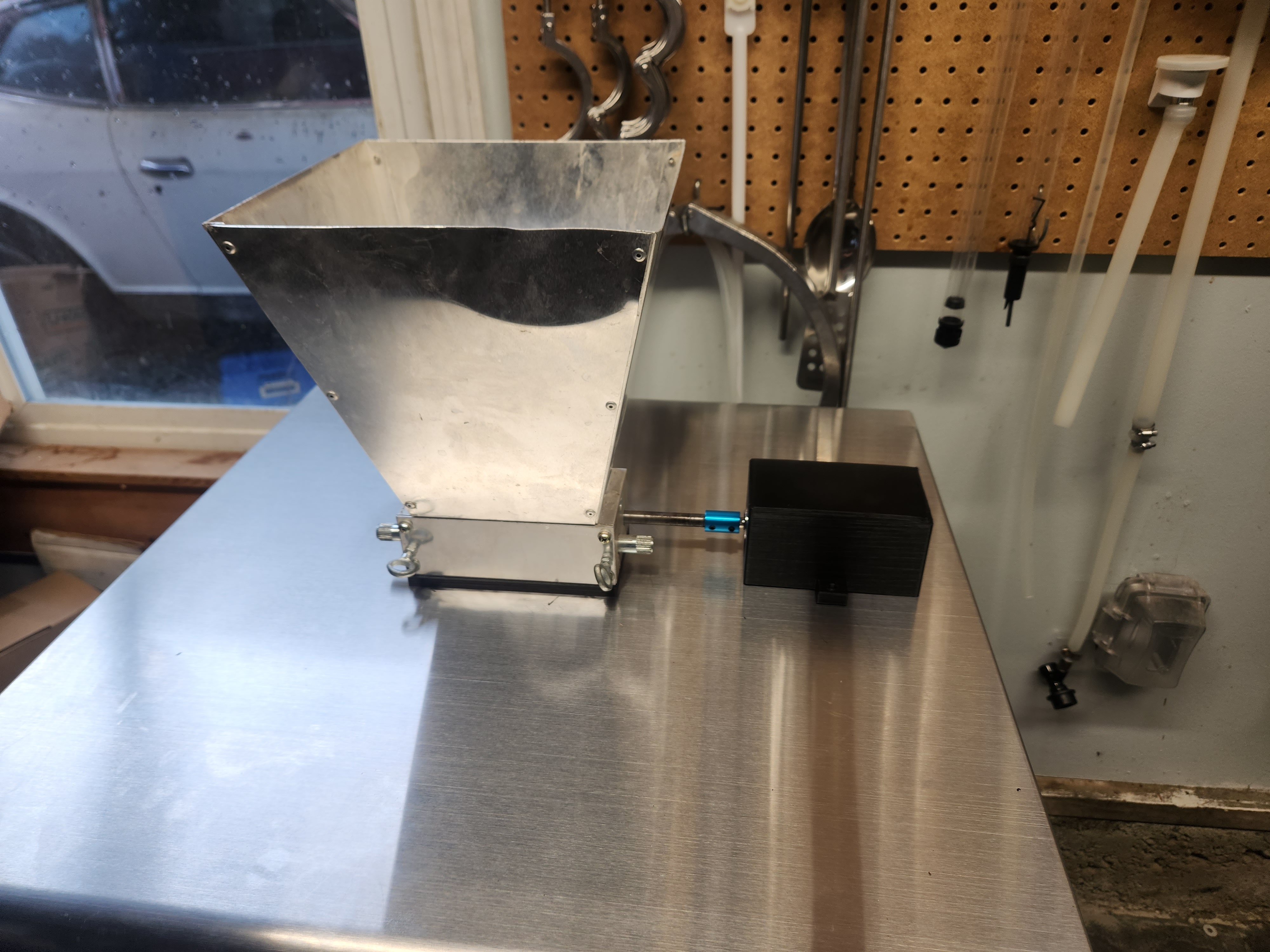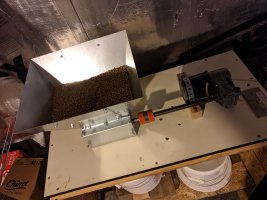My friend kicks ass.
A couple years into my brewing journey I picked up a used mill from someone on the forum. Since all it had was an input shaft I used my hand drill to power which worked fairly well.

The downside is of course having to hang out with it holding the trigger. I tried ways of automating, mainly with zip ties but since the mill just sits on the bucket the whole mill will rotate if the powered roller gets stuck, like on a rock, for instance. Had a lot of malt on the floor after that one.
I tried looking at adapting my 1/2 hp Craftsman AC motor but to get the speed down to under 200 RPM would require a 2in sheave on the motor around 20in on the mill, or an assortment of smaller sizes in between, which would require an idler/added complexity. Reducing power on AC motors isn't reliable.
I looked at purpose built motors with transmissions but they were hundreds of dollars new. Amazon has a ton of cheap DC motors though so that seemed like it could work. However most of them didn't seem like they would have the requisite torque at the right speeds. Eventually I gave up and decided to stick with the drill motor.
Eventually my buddy decided to look into this after working with DC motors and controllers that he used when making 3D printed projects. After a few measurements he whipped this up.



Has variable speed, forward and reverse, it is nearly silent until malt is added, and is plenty powerful.
Obviously the unit still sits on a bucket, but I have a plan for that.
A couple years into my brewing journey I picked up a used mill from someone on the forum. Since all it had was an input shaft I used my hand drill to power which worked fairly well.

The downside is of course having to hang out with it holding the trigger. I tried ways of automating, mainly with zip ties but since the mill just sits on the bucket the whole mill will rotate if the powered roller gets stuck, like on a rock, for instance. Had a lot of malt on the floor after that one.
I tried looking at adapting my 1/2 hp Craftsman AC motor but to get the speed down to under 200 RPM would require a 2in sheave on the motor around 20in on the mill, or an assortment of smaller sizes in between, which would require an idler/added complexity. Reducing power on AC motors isn't reliable.
I looked at purpose built motors with transmissions but they were hundreds of dollars new. Amazon has a ton of cheap DC motors though so that seemed like it could work. However most of them didn't seem like they would have the requisite torque at the right speeds. Eventually I gave up and decided to stick with the drill motor.
Eventually my buddy decided to look into this after working with DC motors and controllers that he used when making 3D printed projects. After a few measurements he whipped this up.



Has variable speed, forward and reverse, it is nearly silent until malt is added, and is plenty powerful.
Obviously the unit still sits on a bucket, but I have a plan for that.


